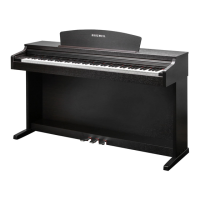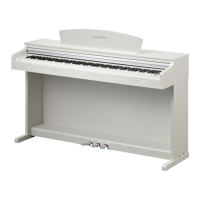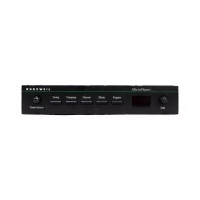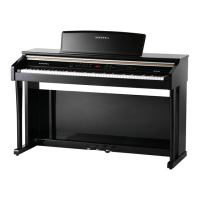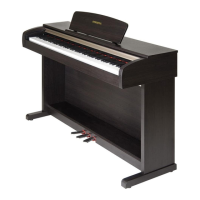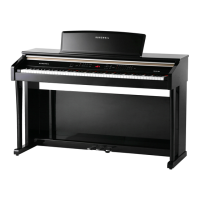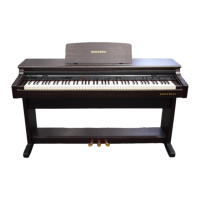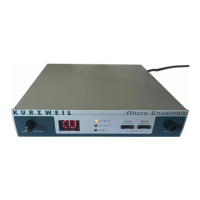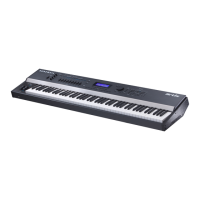Do you have a question about the Kurzweil M90 and is the answer not in the manual?
Lists all parts included in the piano package for assembly.
Detailed steps for connecting the stand legs to the piano body.
Instructions for attaching the pedal board to the stand assembly.
Steps to attach the back panel and secure the piano body to the stand.
Identifies and describes controls on the front of the piano, including volume and buttons.
Details the various input and output connectors found on the rear of the piano.
Instructions on how to turn the piano on and off using the standby button.
Explains the auto-off feature and how to deactivate it.
Guide to setting the master volume and starting to play the piano.
Explains the function of the damper and sostenuto pedals.
How to select, play, and stop the built-in demonstration songs.
Details the headphone jacks for private practice and automatic speaker muting.
Explains MIDI, USB-MIDI, and USB Audio interfaces for communication.
How to connect external audio systems via Line Out and Aux In.
Using keys for selecting and editing advanced piano functions.
How to select instrument voices using keyboard keys and LED display.
How to turn on/off, adjust volume, tempo, and time signature.
Steps to enter record mode and start recording a musical track.
How to set the tempo before starting a song recording.
Choosing which track to record to and how to clear recorded data.
Instructions for playing back recorded songs from the song recorder.
How to select songs and practice left/right hand parts.
Using different song banks (Czerny, Beyer, School) for learning.
Explains MIDI communication and its use as a controller.
How to disconnect the keyboard from the internal sound engine for external control.
A table detailing MIDI transmitted and recognized functions.
Shows default settings and their retention after power cycling.
A reference chart for advanced function key assignments.
Lists default values and ranges for various piano parameters.
Lists all parts included in the piano package for assembly.
Detailed steps for connecting the stand legs to the piano body.
Instructions for attaching the pedal board to the stand assembly.
Steps to attach the back panel and secure the piano body to the stand.
Identifies and describes controls on the front of the piano, including volume and buttons.
Details the various input and output connectors found on the rear of the piano.
Instructions on how to turn the piano on and off using the standby button.
Explains the auto-off feature and how to deactivate it.
Guide to setting the master volume and starting to play the piano.
Explains the function of the damper and sostenuto pedals.
How to select, play, and stop the built-in demonstration songs.
Details the headphone jacks for private practice and automatic speaker muting.
Explains MIDI, USB-MIDI, and USB Audio interfaces for communication.
How to connect external audio systems via Line Out and Aux In.
Using keys for selecting and editing advanced piano functions.
How to select instrument voices using keyboard keys and LED display.
How to turn on/off, adjust volume, tempo, and time signature.
Steps to enter record mode and start recording a musical track.
How to set the tempo before starting a song recording.
Choosing which track to record to and how to clear recorded data.
Instructions for playing back recorded songs from the song recorder.
How to select songs and practice left/right hand parts.
Using different song banks (Czerny, Beyer, School) for learning.
Explains MIDI communication and its use as a controller.
How to disconnect the keyboard from the internal sound engine for external control.
A table detailing MIDI transmitted and recognized functions.
Shows default settings and their retention after power cycling.
A reference chart for advanced function key assignments.
Lists default values and ranges for various piano parameters.
| Brand | Kurzweil |
|---|---|
| Model | M90 |
| Category | Musical Instrument |
| Language | English |
